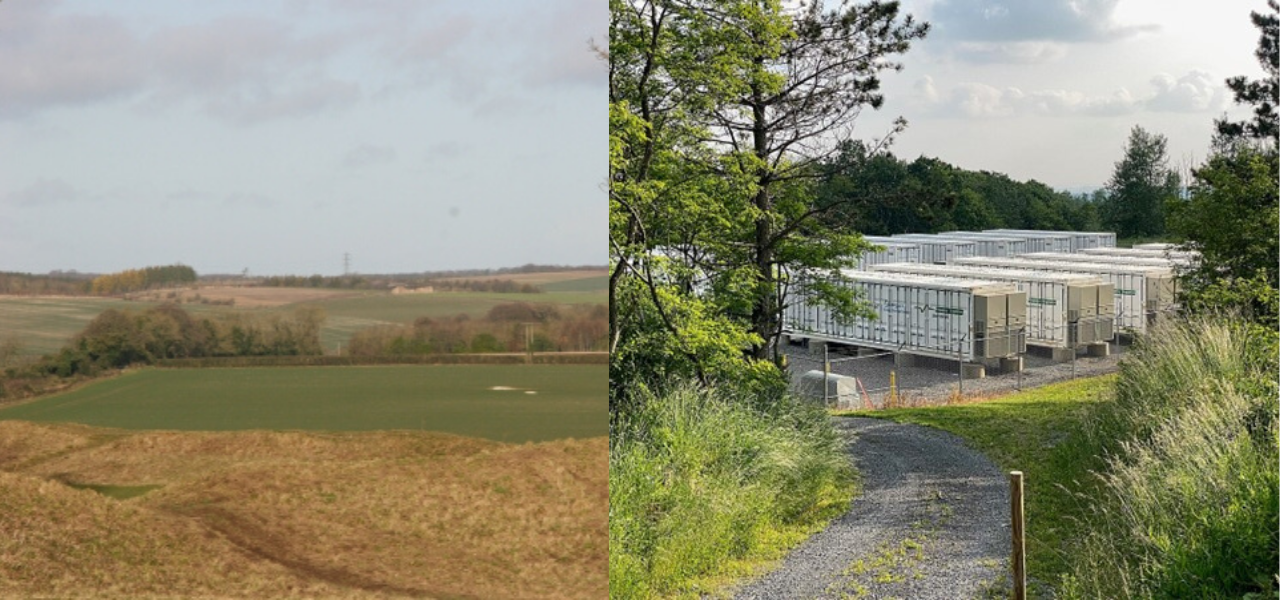Battery Electrical Storage Systems (BESS)

The Government is encouraging the development of backup generation and battery storage in the countryside as a means of increasing electricity supply.
Backup generation is usually provided by a cluster of diesel- or gas-powered engines that can be brought into service at short notice.
Battery storage is usually in the form of large numbers of industrial-scale batteries packed together, which take in and store electricity when there is more available than the National Grid needs, and release it when the Grid needs more than is available from usual day-to-day sources.
For the CPRE, these industrial processes are presenting new problems. They use large steel-framed structures and converted shipping containers to house the equipment they require. These alien features in the countryside are usually enclosed by a steel palisade security fence, which in turn is encircled by hedging and trees to ‘mitigate’ the visual and landscape impacts they create.
We recognise that new supplies of electricity are needed, but we believe the sites chosen for building them should be carefully controlled. The industrial equipment these processes require should be sited in industrial settings, or on brownfield land. Only in exceptional circumstances should greenfield sites be used.
Lithium-ion batteries (LiBs) store a very large amount of energy in a very small space or mass (i.e. have a high energy density) and, as such, are the first to employ organic solvents rather than water. LiBs are invaluable as they have a range of uses – from mobile devices and cameras on the small scale, to storing electricity (including electricity from renewable energy generators) on the industrial scale.
However, if the stored energy is released in an uncontrolled fashion, highly toxic gases are released that are also flammable and explosive. There are currently a number of electrical safety standards in place, but these fall short of adequately preventing and mitigating the risks of thermal runaway events, and the consequences of these (fires, explosions, gas emissions etc). LiBs play an invaluable role for our energy storage needs, but adequate and appropriate safety regulations must be put in place to ensure the ongoing safe functioning of these, especially when deployed at Grid scale.



